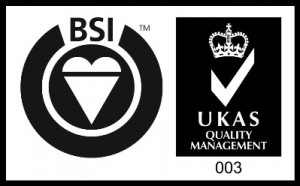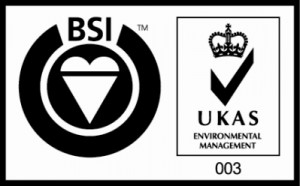Help Centre
Have a technical question or issue about gaskets and sealing? Unsure about chemical resistance, temperature, or pressure? Take a look at our help centre.
Contact Us
Need a price for a standard or bespoke part? Why not send us a quotation request.
Seeking Precision Dimensions with Rubber Gaskets and Seals
On this page – Gasket Tolerance | Ensuring a seal | Rubber displacement | Rubber and Friction | Density, dimensions and sealing softer rubber | What is a foam | Displacement and Compression | Dimension changes on fitting | Tolerance of sheet gasket materials | Cutting flexible gasket materials | How do I measure a gasket? | The tightest tolerance | Finishing and accurate measurement | What tolerance | Metal tolerances on a drawing | Wide tolerances affect the design | Adjusting part dimensions for accuracy |
Rubber Gasket Tolerance Can’t Be Precise, Here’s why…
Tolerances can be critical in the design stage. Soft flexible and elastic materials often pose a problem; margins are wide and failure can be high (the seal itself is the weakest point). Often designers and engineers look to minimise tolerance and demand consistency in production to prevent gasket failure.
This article seeks to understand the reasons behind tolerances, why they may or may not be important with flexible materials and what factors within gasket dimensions are the most important when designing a seal. Tolerances can be difficult to achieve, you may not need to worry about tolerances being exact.
Gasket tolerances are wider than other materials such as metals glass and composites, however this is rarely a problem, rubber has many excellent properties that other materials cannot get close too. It is the very fact that rubber is very hard to cut to exact tolerances that makes it such an excellent seal. It displaces and distorts into every place you are trying to seal whilst retaining volume and density.
The Tolerance that RAM Quotes with Most Parts.
Generally, RAM quotes gaskets at a tolerance of ± 0.5mm. This can seem to some designers/engineers a large margin of error. Below we discuss why this is the case and what can be done when tolerances are critical.
How a rubber gasket is creating a seal.
To work a gasket must be softer than the flanges and distorted by them. Elastomers are elastic and resilient, displaced not compressed between the surfaces. The material, if a solid rubber retains its density and moves to other areas sealing the gap.
Ensuring a Seal.
The surface area of the flange creates a pressure on the surface area of the gasket which is greater than the system pressure applied to the edge of the gasket by whatever it is sealing against.
The physical dimensions of the gasket purely position the gasket between the flanges.
When the gasket is pressurised by the flanges, all the rubber dimensions’ change. The material is distorted within the flange; the rubber component of the material is very important here as this is a material that displaces rather than compresses.
Why is Rubber Displacement so Important?
Rubber displacement means a larger surface area of the flange is covered when the material is compressed, it is solid and impermeable when in its natural state, when compressed it maintains this whilst the elastic nature of the material allows it to be compressed over a larger surface area.
The rubberised compound compresses by the material resisting the force of the flange compression and when it becomes too great it moves to an area of lower pressure, this means the material is still intact and that there is a greater area of flange that is sealed. Rubber’s unique friction properties play a part here too.
Rubber and it’s Friction Properties
Rubber has a high friction on many surfaces, its low elastic modulus and high internal friction makes for a ‘grippy’ material when subjected to pressure against a harder material. Any areas of stress are consumed ‘locally’ in a rubber, deforming around shapes and imperfections whilst the rest of the material remains in its previous form relative to the amount of pressure applied.

Density and Dimensions, Sealing with Softer Rubbers
If the material is less dense like a softer rubber at room temperature the compression of the flanges will displace the material with more ease. There is a greater chance of over-compression the softer the material, when a material is over-compressed it can be completely squashed out of the flange.
How is a Foam Different and Why Would I Consider a Foamed Rubber?
Foamed rubbers are good for areas of lower pressure, rubberised foams used in the gasket industry are closed cell – this means there are fully encapsulated air bubbles in the material and the material itself is not porous as illustrated in the illustration below. The foam allows a low-pressure flange to be tightened and create a seal, there is greater contact area with lower pressure. If the material is over compressed the air bubbles are fully compressed and the material then acts like a rubber once more.
When Displacement Mustn’t Occur.
In high temperature applications, a rubber can’t be used as it is flammable. Rubber compounds are blended with high temperature fibres, the rubber compound gives some compression whilst the fibres prevent the material from reaching a high enough temperature to burn and melt.
Displacement and Compression in high temperature and high pressure applications.
Displacement and compression are major factors in creating a seal however in high temperature, high chemical and high pressure environments, (sometimes all three) other material alternatives must be considered. The design of the flange is often around encapsulating a gasket or material to withstand the pressure such as the use of spirally wound gaskets within a specially designed pipe flange. There are many different types of material for all applications. Use RAM’s technical support (contact form) to decide on a material type.
Dimension Changes When Fitting the Seal.
From the information above you can see how many dimensions change when gaskets are utilised for sealing, this shows how tolerance on the original cut part can have little impact on the final compression place of a gasket. A tolerance of ±0.5mm is sufficient for nearly all applications.
Tolerance of Gasket Sheet Materials Before Cutting.
The gasket materials themselves are only produced within a range. For a sheet material Hardness is +/- 5 SH for instance. The centre of a sheet of material will have a different thickness and hardness reading to the edges of the material. Thickness of the materials also has a quite wide tolerance before you even begin cutting.
Cutting Flexible Gasket Materials and How This Further Effects Tolerance.
The material moves away from the cutter before it is cut and recovers to a different dimension after it is cut. This varies between type and thickness of material and changes with the features and dimensions of the gasket, e.g. two holes close together or a thin flange will have a bigger distortion than another area of the gasket.
The method of cutting also changes the way the material behaves. a profile cutter will produce a slightly spiral hole with a step between start and finish and a taper between top and bottom. A press cut component will have an apple core profile with a waisted area half way down the hole. The dimensions will be different between the top, bottom and middle of the hole.
So, how do I measure a gasket?
Firstly, different people using the same equipment will get different results. Optical measuring will find the absolute minimum or maximum dimension while a Vernier will generally distort the material a little before the measurement is taken. A go/no-go gauge will generally give an oversize measurement as it pushes through.
When designing a gasket, a 20mm bolt will get a 22mm clearance hole in the gasket. The flange will usually be 3mm or so bigger than the gasket so that when it is tightened on the gasket the gasket edge expands outwards to the edge of the flange, rather than sticking out beyond it. However, this effect can be used to grip the sides of a bolt or a screw for instance.
How did you measure your gasket?
It is important to consider how you have measured your component. Have you measured the flange face or an old gasket, for example? If you measure the same dimension 20 times you will get a spread of results, so the measurement itself is only accurate within a range say +/- 0.25mm. Did you measure the top, middle or bottom of a hole? Simply laying a gasket on a flat surface, the surface friction can hold a dimension bigger or smaller. If the gaskets are made from rubber foam then this variation can be several mm.
The measurement intention is to establish the effective surface area of the gasket, but you can only measure its dimensions. The outcome of accurate measurement is that the gasket will sit on the flange, the bolts will fit through the holes, the surfaces of the flanges will press against the surfaces of the gasket, distorting the gasket and building up a pressure which is greater than the environment you want to seal against.
What is the tightest tolerance that can be achieved?
The tightest tolerance a rubber can hold is around +/- 0.2mm. This requires mould tooling which is a huge initial investment where the relative precision gained must be important to warrant the overhead and long lead times involved. Change a dimension even by 0.5mm and you start the whole process again. It is only suitable where the part has features in the third dimension and the volumes are high enough to spread the cost of the tool. RAM can provide moulded parts, tighter tolerances and individual conformance checks on each part if required.
Finishing and accurate measurement.
A gasket does not behave like metal, it can’t be cut thinly or machined like a shim, it does not have finishing operations like grinding and polishing. It works because its dimensions are vague and it changes its shape under pressure. It adjusts for changes in temperature and pressure, expansion and contraction, absorbs vibration and dampens oscillations protecting the metal parts which are too rigid and precise to allow this variation.
What tolerance does RAM provide for rubber based gaskets and seals?
We quote a tolerance of +/- 0.5mm for our gaskets.
Most dimensions fall within this tolerance. In some cases, a special tolerance has to be specified which is particular to a part. Or a part has a critical dimension which can be catered for usually with a looser tolerance somewhere else.
What tolerance should I put on my drawing?
RAM knows you need to put tolerances on the drawing, that they are important to metal parts fitting together. But they are not to the gasket. Each one must be considered separately. A complicated hydraulic face seal is different to a 500mm NB pipe flange even if they are made from the same material.
Standard Gasket Tolerance.
+/- 0.5mm is a good tolerance for most rubber based flange applications.
What does +/- 0.5mm mean for my design?
When RAM says +/- 0.5mm we mean that the part is cut within those dimensions and you should be able to say that the hole was nominally 12mm rather than being 11mm or 13mm. Add to that an error in obtaining the actual measurement and you have established that it is a part that will fit the flange and the bolts will go through and that when the bolts are tightened there is sufficient surface area to create the sealing pressure. Also, consider the size of the gasket. If its 2m in diameter, can you measure it within 3 or 4mm and if it’s rubber it will distort as it’s fitted anyway.
Cutting to Metal Tolerances on a Drawing.
Commonly drawing software the initial drawing template has a tolerance for metal parts. Many designers don’t remove them and subsequently buyers then request the tolerance on a quote. We advise them the tolerances can’t be reached and this article goes some way to explaining why.
When Tolerances are so wide they affect the design. Most Commonly when Measuring Manhole Gaskets on-site.
Measuring a manway for a new gasket is a series of co-ordinate hole centres and these holes have a central tolerance. Often standard sizes, however, manway gaskets are commonly bolt punched on site, with tolerances that have a margin of error, a wide tolerance can substantially affect a dimension on bigger gaskets, as overall dimensions are bigger. The complete gasket is often flexible however when this poses a problem, prototype parts can be created and checked for fit before larger scale production commences.
Adjusting part dimensions for accuracy.
Accuracy is most often required when the space a gasket can fit in is small, also when surrounding materials are not strong and displacement mustn’t weaken the assembly. Softer material can be used to help; however, this can impact on the seal ability under pressure. When parts require accurate cutting we cut small volumes and test each measurement. There are so many variables that conformance is achieved through the CAD set-up and testing dimensions as they are cut. Conformance and reports can be provided if a gaskets dimensions are critical.
Thinner is Better – for Sheet Gasket Materials
We recommend using the thinnest possible gasket in most instances. The reasons for this are:
- Less leakage – smaller cross section of gasket material exposed to the internal pressure
- Resistance to Blow-out due to the smaller cross-sectional area
- Stronger compression strength contributes to higher surface loads able to be safely applied
- Better bolt torque retention as thinner material has lower creep relaxation characteristics
- Cheaper gasket as less material is used
Foam/Sponge Gasket Materials
Thinner materials are not necessarily better for foamed gasket materials, with foam/sponge materials you would look to achieve a compression of 1/3rd of the gaskets original thickness, different densities of foam can be utilised to withstand more/less pressure. There is a whole world of options so get in touch if you’d like to talk about your particular application and what would be best.
Gaskets fail for many reasons; often a combination of different factors. Here are some things to consider:
- Are the flanges even/flat?
- Is the Torque correct?
- Are the bolt spaces even?
- Is the gasket too thick?
- Is the material correct? (resistant to fluid, service chemicals, temperature etc.)
- Too old (gaskets have a shelf life)
- Blow out (pressure inconsistencies)
This is a tricky subject as it varies greatly with each material. We can conform to tolerances when they are necessary. For an in-depth read about gasket tolerances with flexible rubber based materials please read our article Gasket Tolerance.
The compression and subsequent displacement of the material when gasket material is compressed between two surfaces causes a seal to be formed that is maintained with movement, vibration, temperature fluctuations and the presence of chemicals, fluids, oils and steam. Different gasket materials are used for different applications. The materials are chosen based on their ability to resist the required operating environment.
For a more in-depth discussion about how gaskets are used within tolerance we have an article Seeking Precision With Rubber Parts.
Gaskets are compressed between surfaces to maintain a seal. For this reason, most materials are slightly flexible, have good compression set (they bounce back) and allow for slight movement of the surfaces that they are secured between.
We recommend the following best practices to ensure correct gasket fitting:
- Care in material selection.
- Care of flange faces.
- Do not use jointing compounds.
- Gasket sealant or not? (Generally no gasket sealant is required). See here for more information on gasket sealants.
- Re-torque after 24 hours or one process cycle.
Recommendations:
- Choose as thin a material as possible.
- Clean the flange faces and remove any dirt on the studs / bolts /nuts.
- Lubricate the threads and the nut face. If possible use a lubricant based on:
- Molybdenum Disulphide
- Copper
- PTFE
- Before assembly ensure that the nuts run freely on the threads.
- Carefully fit the gasket taking care not to damage the gasket surface.
- Tighten the bolts in the recommended sequence (eg diametrically opposite) to about half load.
- Check visually that the flanges are uniformly loading the gasket.
- Tighten to the recommended torque for the flange system.
- After 24 hours of operation, or one process cycle, re-tighten to the correct torque (the gasket will have relaxed).
- If the flange has not been in service and is unlikely to be so in the short term then still re-tighten.
Use of Graphic & other Anti-Stick Coatings:
- Care should be taken to apply a very thin coating.
- Not recommended where flanges are worn or where high pressures (in excess of 17 bar) are expected.
- Do not use graphite grease.








